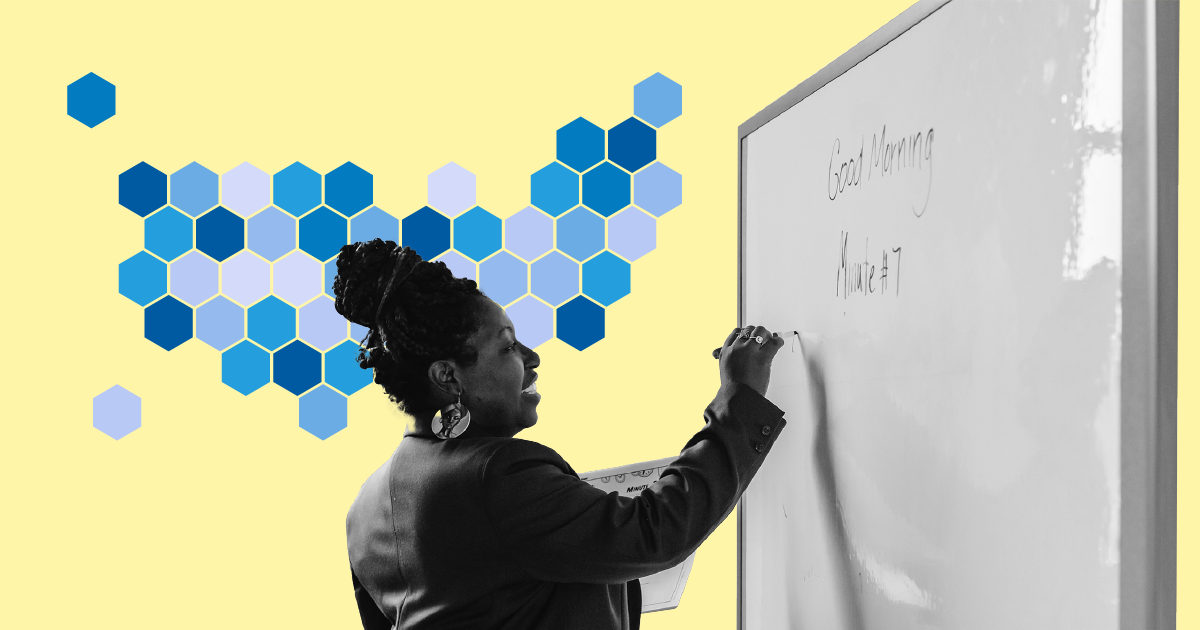Education
Which states pay teachers the most and least?

Black children are more likely to be disciplined than their white peers across all ages and all forms of discipline, according to data from the Department of Education for the 2017-18 school year. About 15% of K-12 public school students are Black, but they make up more than 30% of students who are suspended, expelled, or arrested. The racial disparity exists for public preschool students as well. Black preschoolers are 18% of enrolled students but are 43% of out-of-school suspensions.
Students with disabilities are also disproportionally disciplined. Children served under the Individuals with Disabilities Act represented 13% of K-12 enrollment but accounted for more than 75% of all restraint and seclusion cases.
While school-related arrests, referrals to law enforcement, and expulsions with educational services increased between the 2015-2016 and 2017-2018 school year, overall suspensions, zero tolerance expulsions, and expulsions without educational services decreased.
A total of 5.3 million disciplinary cases were recorded in the 2017-2018 school year, the most recent year available. Almost all of those cases were in or out-of-school suspensions. Corporal punishment is the least used form of discipline nationwide, making up about 1% of all cases.
Disciplinary action against K-12 students has gradually decreased over the past 10 years, according to data from the Department of Education.
According to the latest government education data, Black students made up 15% of student enrollment. They represented double the number of all in-school suspensions at 31%. White students were 47% of total public-school enrollment and represented 39% of all suspensions.
Overall suspensions decreased by about 2% between the 2015-2016 and 2017-2018 school years.
While expulsions with educational services increased by 7% between 2015-16 and 2017-18, expulsions without educational services decreased by 18%, according to the Education Department. This was the biggest drop for all discipline categories.
During the 2017-18 school year, Black students made up 15% of student enrollment, but were expelled more than twice their enrollment numbers: 39%.
Law enforcement referrals increased by 12% between 2015-16 and 2017-18 school year.
Black students were 29% of all referrals to law enforcement while white students were 38% of all referrals. Students with disabilities were referred to law enforcement twice the amount of their enrollment numbers. Black students with disabilities served under the Individuals with Disabilities Act represented 17% of all student enrollment but represented 32% of all law enforcement referrals.
School-related arrests increased by 5% between 2015-2016 and 2017-2018 school year.
Black students made up 32% of school arrests, doubling the enrollment numbers of Black students in K-12 public schools. Among all students with disabilities, Black students with disabilities represented 35% of all arrests while making up 17% of student enrollment.
About 2% of all disciplinary cases involved restraint or seclusion. The Department of Education defines physical restraint as restriction that prevents a student from moving their body. Mechanical restraint uses a device to limit a student’s freedom of movement. Seclusion is the forced confinement of a student alone in an area, preventing them from leaving.
Every state except for Hawaii reported using physical restraint and seclusion to punish students.
The most common form of restraint or seclusion discipline is physical restraint. Close to 57,000 students were subjected to physical restraint nationwide. Seclusion was used around 21,000 times.
About 75% of restraint and seclusion cases involved students with disabilities during the 2017-18 school year.
Corporal punishment is the act of school staff intentionally inflicting pain on a child as a punishment, according to the Department of Education.
Corporal punishment is used in 22 states plus Washington, DC. The Education Department recorded more than 69,000 instances of corporal punishment in K-12 schools during the 2017-18 school year. Mississippi public schools most frequently used corporal punishment to discipline students compared to the rest of the country, representing 30% of all reports.
Black students made up 36% of all corporal punishment cases nationwide, while students with disabilities represented 19% of all cases. In Mississippi, Black students represented 63% of all uses of corporal punishment.
Racial disparities in school discipline data begin at an early age for public school children. In the 2017-2018 school year, Black preschoolers were 18.2% of total student enrollment but made up 43.3% of all out-of-school suspensions and 38% of all expulsions. White preschoolers represented 43% of student enrollment and made up 33% of all out-of-school suspensions and 37% of expulsions.
Public preschoolers receive a small portion of all disciplinary action. During the 2017-18 school year, preschoolers were disciplined close to 4,000 times. Nearly 75% of those cases involved suspension. There were 851 corporal punishment cases.
Learn more about education in the US and get the facts every week by signing up for our newsletter.
Newsletter
Keep up with the latest data and most popular content.